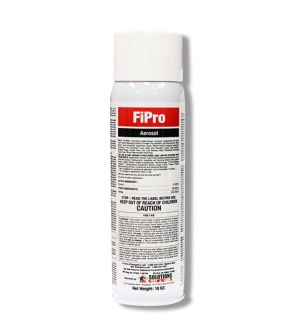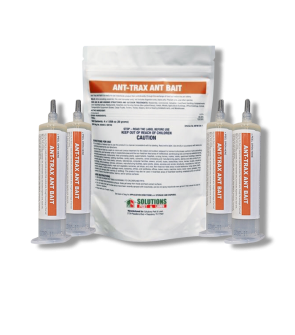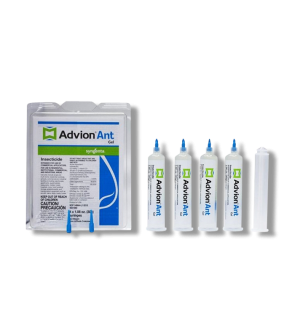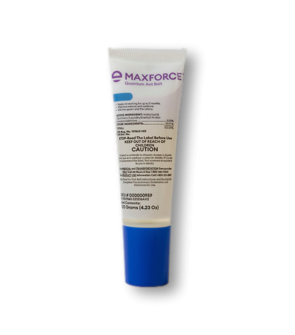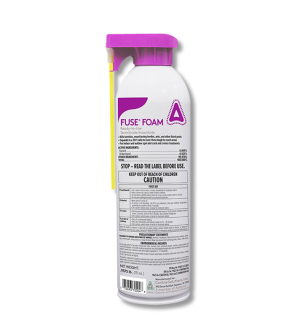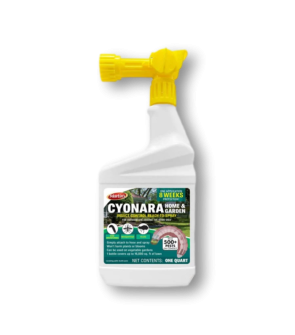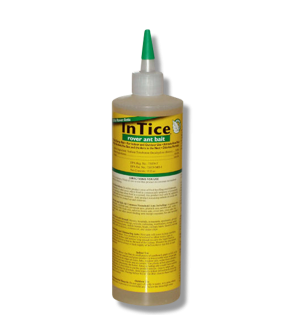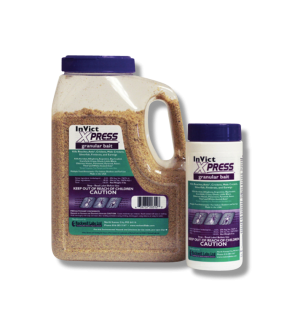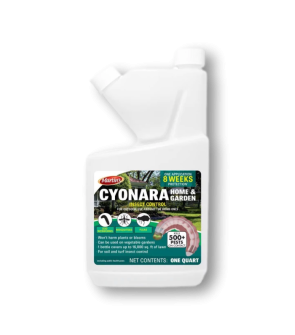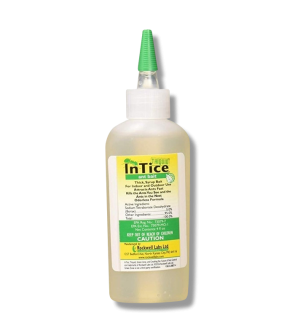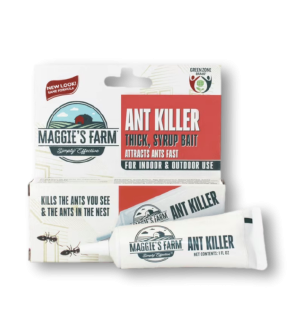Gain access to personalized product screening, the best pricing, rewards, and more!
Most Effective Products
White-Footed Ant Control: How To Get Rid of White-Footed Ants
This page is a white-footed ant control guide. Using the products and methods suggested, you will get control of white-footed ants. Follow this guide and use the recommended products, and we guarantee 100% control over white-footed ants.
Among the most challenging species to control, the white-footed ant has become a rising problem in the southern United States, particularly in Florida. They are hard to control because colonies of white-footed ants have many reproductive queens, which can make up nearly half the colony if left to their own devices. This can make their population grow to massive proportions and be a pain in the neck for homeowners.
The white-footed ant resembles the crazy ant and odorous house ant but can be easily distinguished by its tarsi (the section at the end of its legs), which are very light yellow or yellowish-white. This is how it gets its name.
White-footed ant colonies are very large, with an average colony carrying between 400,000 and well over 1 million ants. This puts food in very high demand, and as a result, these pests forage over a wide range of different food sources. Typically, these ants show up at food sources in large numbers.
If you have white-footed ants on your property, you’ll want to implement an effective control program before their numbers get out of hand. Our ant control experts put together the DIY guide below and will provide the techniques and product recommendations to eliminate white-footed ants quickly and affordably.
Identification

Before taking a treatment approach, you must be sure you are dealing with white-footed ants. Misidentification can lead to using the wrong treatment products, which can be a waste of time and money. Below are some common characteristics of white-footed ants so you know what they look like for easy identification.
- The white-footed ant is small to medium compared to other ant species, ranging from 2.5 to 3 mm long. The white-footed ant is black to brownish-black in color, with the distinguishing trait of feet that appear to be cream-colored, which is how they get their name.
- White-footed ants have 12 segmented antennae, five segments in their abdomen, and no stingers. The
- Based on appearance, the white-footed ant has been compared to the argentine ant. However, because of its movement, it is often mistaken for the crazy ant.
Use the image and description above to identify white-footed ants on your property properly. If you are unsure, contact us, and we will try to assist you with the correct identification.
Inspection

Once you are sure that the infesting ants are white-footed, you should proceed with an inspection. During the inspection, you will search for these "hotspots" where white-footed ants nest or form their foraging trails.
Where To Inspect
Start your inspection outdoors. Search your yard near decaying wood, trees, tree stumps, logs, woodpiles, lumber, under rocks, bricks, leaf litter, and general clutter. Indoors search near areas where moisture is created, like the bathrooms, utility rooms, and kitchens, and where food and liquids are available.
What To Look For
You're looking for white-footed ants, their foraging trails, and their nest or colony. Nests are more commonly found outdoors than inside. Inspect the ants and their foraging trails in all the places listed above. If you can find any foraging trails, follow it back to its sources. This might lead you to cracks and crevices in the home or the colonies themselves outside. Once you have discovered white-footed ant foraging trails and their colonies, it is time to enact treatment.
Treatment
Once you have confirmed white-footed ant activity, it is time to begin treatment. Remember to read all product labels, follow the application instructions on them, and wear personal protective equipment (PPE) to stay safe.
Using more than one product to tackle this pest and knock down the entire population is best. Outdoors, we suggest applying Supreme IT Insecticide to any mounds around your home's perimeter to create a barrier. Indoors, use FiPro Foaming Aerosol and Ant-Trax Ant Bait to kill worker ants foraging for food.
Step 1: Outdoor Treatment with Supreme IT
Supreme IT is a potent insecticide concentrate that kills and repels insects away from your property. This makes it perfect for applying as a barrier or perimeter treatment to prevent white-footed ants from approaching your property. It is also ideal for dredging mounds or nests you can find.
Calculate the square footage of your yard to determine how much Supreme IT you need. Measure (in feet) the area's length and width and then multiply the two values (length x width = square footage).
Supreme IT's label states to use 0.5 to 1 oz. of Supreme IT to treat indoor and outdoor ant infestations in a gallon of water per 1,000 sq. ft.
Mix 0.5 to 1 oz. of Supreme IT with a gallon of water inside your pump sprayer.
Then, perform a perimeter treatment around your property by spraying 3 feet up and 3 feet out from the foundation of your structure. While spraying in this manner, also spray eaves, soffits, rain gutters, windows, doors, garage doors, electrical/plumbing penetrations, and cracks and crevices.
To drench any ant colonies or nests you can find, first spray around the diameter of your anthill to prevent ants from escaping. Then, spray the mound directly until it is drenched.
Step 2: Indoor Treatment with Ant-Trax
For ants that have made their way indoors, use Ant-Trax Ant Bait. Ant-Trax is an attractive ant bait with a sweet taste that white-footed ants will love. White-footed ants are an ant species that doesn't share bait with others in the colony, so this will not kill the entire population, only the worker ants that carry or consume the bait (which is why it is best to combine bait applications with other products or forms of control like Supreme IT).
This product comes in a syringe for easy application. To apply, simply press down on the plunger. You will use a pea-sized drop, separated by at least one foot, in all areas where activity has been observed. Apply close to colonies and cracks and crevices where ants are emerging. Also, apply on countertops, around and behind appliances, and in cracks and crevices throughout the home.
Allow 7 to 10 days to pass, and do not kill the ants or clean (or use cleaning supplies) near the places where Ant-Trax was applied. The point is to let the ants feast undisturbed on the bait.
Step 3: Apply Fipro Foaming Aerosol
Fipro Aerosol is a non-repellant foaming spray that treats cracks and crevices from which ants hide, travel, and emerge. Its foaming capabilities allow a tremendous reach that other forms of ant control cannot do.
Inject the tube straw and apply it to cracks and crevices where ants have been observed. Apply to window frames, door frames, around sinks (underneath sinks where plumbing penetrates walls), to cracks and crevices, and anywhere you have observed white-footed ant activity. If you have found key spots where white-footed ants are emerging from, apply in these areas.
Prevention
Once the white-footed ant problem has been eradicated, you can help keep them from re-invading by carrying out regular sanitation and implementing some habitat modifications and exclusion measures to make your home less appealing to white-footed ants. This can be done by:
- Fix leaks, thoroughly clean your home (particularly the kitchen) to remove crumbs and grease, and seal cracks and crevices with caulk to reduce moisture.
- Some additional preventative measures to reduce the likelihood of a white-footed ant reinfestation include trimming trees and shrubs surrounding the structure to the point where they don’t touch the home. These are often bridges for white-footed ants to move on into a home. Large trees infested with white-footed ants that overhang near your home should also be trimmed back.
- Finally, quarterly treatments of Supreme IT around your yard are also an effective preventative measure since Supreme IT can remain effective for up to 90 days.
Key Takeaways
What are White Footed Ants?
- White-footed ants are a species on the rise in the Southern United States. They are known for forming large colonies.
How to Get Rid of White-Footed Ants
- To control white-footed ants, we recommend combining Supreme IT Insecticide, Fipro Foaming Aerosol, and Ant-Trax Ant Bait.
Preventing White-Footed Ant Reinfestation
- Prevent re-infestation of white-footed ants by implementing exclusion measures and habitat modifications to make your property less appealing.












